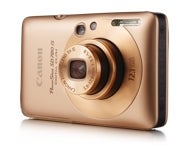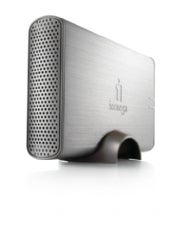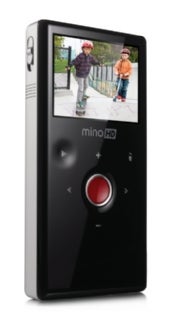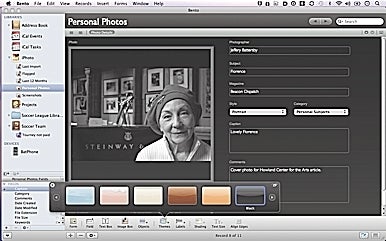( ): MondoMouse is a bit difficult to explain: It lets you move and resize windows, in any program, without having to grab a thin title bar or tiny resize handle. You just move the cursor over the window you want to modify, press your chosen modifier key(s), and then move the mouse; the window moves or resizes with the cursor. (Still not clear? Check out ourMacworld Video on MondoMouse.) It may not sound impressive, but once you’ve used it, you’ll never go back to clicking and dragging windows. $15; Atomic Bird.
): MondoMouse is a bit difficult to explain: It lets you move and resize windows, in any program, without having to grab a thin title bar or tiny resize handle. You just move the cursor over the window you want to modify, press your chosen modifier key(s), and then move the mouse; the window moves or resizes with the cursor. (Still not clear? Check out ourMacworld Video on MondoMouse.) It may not sound impressive, but once you’ve used it, you’ll never go back to clicking and dragging windows. $15; Atomic Bird.
 ): MondoMouse is a bit difficult to explain: It lets you move and resize windows, in any program, without having to grab a thin title bar or tiny resize handle. You just move the cursor over the window you want to modify, press your chosen modifier key(s), and then move the mouse; the window moves or resizes with the cursor. (Still not clear? Check out ourMacworld Video on MondoMouse.) It may not sound impressive, but once you’ve used it, you’ll never go back to clicking and dragging windows. $15; Atomic Bird.
): MondoMouse is a bit difficult to explain: It lets you move and resize windows, in any program, without having to grab a thin title bar or tiny resize handle. You just move the cursor over the window you want to modify, press your chosen modifier key(s), and then move the mouse; the window moves or resizes with the cursor. (Still not clear? Check out ourMacworld Video on MondoMouse.) It may not sound impressive, but once you’ve used it, you’ll never go back to clicking and dragging windows. $15; Atomic Bird.( ): This behind-the-scenes utility provides a systemwide notification service used by many Mac programs and system add-ons. As I mentioned a few weeks ago, more and more of my favorite applications and services take adantage of Growl to provide notifications and updates—I can see when downloads and file transfers have finished, when new messages have arrived, when video conversions have completed, when my laptop’s power cable has been disconnected, and much more. An example of a great use of Growl notifications is HardwareGrowler, which informs you of hardware and network connections and disconnections. Free; Growl Developers.
): This behind-the-scenes utility provides a systemwide notification service used by many Mac programs and system add-ons. As I mentioned a few weeks ago, more and more of my favorite applications and services take adantage of Growl to provide notifications and updates—I can see when downloads and file transfers have finished, when new messages have arrived, when video conversions have completed, when my laptop’s power cable has been disconnected, and much more. An example of a great use of Growl notifications is HardwareGrowler, which informs you of hardware and network connections and disconnections. Free; Growl Developers.
 ): This behind-the-scenes utility provides a systemwide notification service used by many Mac programs and system add-ons. As I mentioned a few weeks ago, more and more of my favorite applications and services take adantage of Growl to provide notifications and updates—I can see when downloads and file transfers have finished, when new messages have arrived, when video conversions have completed, when my laptop’s power cable has been disconnected, and much more. An example of a great use of Growl notifications is HardwareGrowler, which informs you of hardware and network connections and disconnections. Free; Growl Developers.
): This behind-the-scenes utility provides a systemwide notification service used by many Mac programs and system add-ons. As I mentioned a few weeks ago, more and more of my favorite applications and services take adantage of Growl to provide notifications and updates—I can see when downloads and file transfers have finished, when new messages have arrived, when video conversions have completed, when my laptop’s power cable has been disconnected, and much more. An example of a great use of Growl notifications is HardwareGrowler, which informs you of hardware and network connections and disconnections. Free; Growl Developers.My worry about Growl is slowing down my system. Any thoughts anyone?
( ): It’s wrong to copy DVDs you don’t own, but there are plenty of legitimate reasons for ripping DVDs you’ve purchased. RipIt lets you rip those DVDs with a single click of the mouse; you can watch the resulting VIDEO_TS folder on your laptop using DVD Player or convert it to a format playable on your iPod, iPhone, or Apple TV. There’s no other Mac software out there that can handle as many different discs as RipIt—including the latest movies that can trip up utilities such as HandBrake and MacTheRipper. Like ClickToFlash, above, RipIt is also an Eddy winner. $20;The Little App Factory.
): It’s wrong to copy DVDs you don’t own, but there are plenty of legitimate reasons for ripping DVDs you’ve purchased. RipIt lets you rip those DVDs with a single click of the mouse; you can watch the resulting VIDEO_TS folder on your laptop using DVD Player or convert it to a format playable on your iPod, iPhone, or Apple TV. There’s no other Mac software out there that can handle as many different discs as RipIt—including the latest movies that can trip up utilities such as HandBrake and MacTheRipper. Like ClickToFlash, above, RipIt is also an Eddy winner. $20;The Little App Factory.
 ): It’s wrong to copy DVDs you don’t own, but there are plenty of legitimate reasons for ripping DVDs you’ve purchased. RipIt lets you rip those DVDs with a single click of the mouse; you can watch the resulting VIDEO_TS folder on your laptop using DVD Player or convert it to a format playable on your iPod, iPhone, or Apple TV. There’s no other Mac software out there that can handle as many different discs as RipIt—including the latest movies that can trip up utilities such as HandBrake and MacTheRipper. Like ClickToFlash, above, RipIt is also an Eddy winner. $20;The Little App Factory.
): It’s wrong to copy DVDs you don’t own, but there are plenty of legitimate reasons for ripping DVDs you’ve purchased. RipIt lets you rip those DVDs with a single click of the mouse; you can watch the resulting VIDEO_TS folder on your laptop using DVD Player or convert it to a format playable on your iPod, iPhone, or Apple TV. There’s no other Mac software out there that can handle as many different discs as RipIt—including the latest movies that can trip up utilities such as HandBrake and MacTheRipper. Like ClickToFlash, above, RipIt is also an Eddy winner. $20;The Little App Factory.Planning to get this one... Had enough of little fingers destroying DVDs...
Mac mini
The first Mac minis, released back in 2005, were several things at once: credible low-price computers, supercompact, and an obvious attempt to lure Windows users over to the Mac side. Many of us became instant fans. But then Apple seemed to give up on the mini. The company released a few updates over the following two years, but the Mac mini line essentially stagnated. That led many admirers to wonder whether Apple’s smallest computer was headed for the dust bin, a cute but failed experiment.
Mac mini

And just seven months later, Apple updated the mini again (

Apple didn’t just bring the Mac mini line up to speed. In October, the company also released a completely new configuration, the $999 Mac mini with Snow Leopard Server (

 ); that software normally costs $499 all by itself. It is a full-featured, unlimited-user server in a tiny, energy-sipping package that is ideal for small businesses, some homes, and the education market.
); that software normally costs $499 all by itself. It is a full-featured, unlimited-user server in a tiny, energy-sipping package that is ideal for small businesses, some homes, and the education market.The past year proves that Apple does indeed care about the Mac mini and, in fact, is using it to push the compact-computer envelope. The mini isn’t for everyone; it’s the least-powerful Mac—laptop or desktop—that Apple offers. But it’s an extremely impressive machine for the size, and it's a good fit for both switchers and people on a budget. It also makes a great second Mac, and it’s an appealing option for a Mac-based media system. This year, we were glad to see that the Mac mini is still very much alive.—Dan Frakes
$599 to $999; Apple
I am a little annoyed I bought the AppleTV some time ago. Should've gotten a Mini...
MiFi 2200
At this point, Wi-Fi seems to be everywhere—in airports, cafes, hotels, and other public places where computer users collect. But there are still plenty of places where there’s nary a hotspot to be found. A few years ago, we started seeing a solution for such coldspots: 3G modems and routers, which let you get online from almost anywhere you can get a cell phone signal. That technology has been evolving; this year we saw one of the nicest developments yet: the MiFi 2200 (

MiFi 2200
The MiFi 2200 is also about as easy to use as a tech product can be: Press the power button on the top and it connects to your carrier’s cellular network. The SSID and password are on the bottom. You can share its access with up to five users at a time. Despite its size, the MiFi 2200 is a fully configurable Wi-Fi base station. Using its Web interface, you can give it a new SSID and password, limit access, adjust TCP/IP settings, and check on signal strength and battery life.
By making useful technology ultraportable, the MiFi 2200 became one of our favorite products of the year.—Dan Miller
$80; Verizon Wireless
This thing would be very useful to someone who needs it. I don't. Damn.
Canon Powershot SD780 IS
In the crowded point-and-shoot market, it’s hard to find a camera that’s very good at everything. But the PowerShot SD780 IS (

Canon Powershot SD780 IS
Combine those features and that ease of use, and you've got our favorite point-and-shoot of the year.—Roman Loyola
$250; Canon USA
Too cool for school!
Iomega Home Media Network Hard Drive

Iomega Home Media Network Hard Drive

Like other media servers, the Iomega Home Media drive stores your music, videos, and photos in one place, where they’re accessible from any Mac or PC on your network. It has its own iTunes server, remote access capabilities, and support for Time Machine and BitTorrent.
Unlike some of its competitors, the Iomega Home Media drive is easy to set up and manage. It’s that last bit that makes it one of our favorite products of the year.—Chris Holt
$150 to $350; Iomega
Interesting alternative to Time Capsule for media backup.
Flip MinoHD

Flip MinoHD
 ) (Best Current Price).
) (Best Current Price).While most pocket camcorders are studies in compromise, the MinoHD offers a great blend of features and performance. It’s easy to operate and solidly built, includes a bright 2-inch display, shoots up to two hours of 720p high-definition video, and includes an HDMI video port. It shoots well in low light and gets colors and tone right under most shooting conditions. Like the other Flips, the MinoHD includes the FlipShare software, which lets you jack the MinoHD into a powered USB 2.0 port, extract video, perform basic edits, and upload the results to your favorite video-sharing service.
In a crowded field, the Flip MinoHD clearly stands out.—Christopher Breen
$200 to $230; Flip Video
I want one...
Bamboo Fun
Tablets aren’t for everyone. But whether you’re a digital artist or just a regular user who’d like to use a pen instead of (or in conjunction with) a mouse, you should take a look at Wacom’sBamboo Fun tablet (
The Fun can serve as a giant multitouch touchpad: Press one finger to the tablet to move the cursor; press two to perform gestures. Its pen is unbeatable for graphics work. It offers 1,024 levels of pressure sensitivity—invaluable for creating subtle effects in apps that support pressure sensitivity.
Put simply, the Bamboo Fun is one of the most innovative input devices we’ve come across in a while; it may be the nicest graphics tablet we’ve ever seen.—Jackie Dove
$199; Wacom
I have one. Not getting much use out of it though. One gripe: Touch area splits over both screens on a two monitor display.
Jason Snell put it best: “If I could have only one Mac utility, a solitary piece of software that I could use to improve using my Mac and all its programs as I went about my daily business, it would be Objective Development’s LaunchBar. When I use a Mac that doesn’t have LaunchBar running, I simply feel naked.”
Downloading this as we speak...
Among this add-on’s many features, the one I use the most is the capability to quickly restore windows to particular sizes and positions. For example, by pressing Mercury Mover’s keyboard shortcut followed by S, my Safari window is instantly placed in my favorite location with my favorite dimensions.
Planning to check this one out...
Bento 3

Bento 3
 ) debuted this past fall, FileMaker offered a $20 rebate to all existing users.
) debuted this past fall, FileMaker offered a $20 rebate to all existing users.But there’s more to this latest version than a reasonable upgrade policy. Bento 3 added iPhoto integration and the ability to share data with others on your local network—both welcome additions. With the addition to 128-bit AES encryption to secure that data, Bento continues to set the standard for personal database programs.—Philip Michaels
$49; FileMaker
Anyone using this? Looks cool enough to try...
Dropbox
These days, we all have files all over the place—our computers at work and home, desktops and laptops, Macs and PCs, and even iPhones. Keeping track of which files you’ve stored where and making sure you have the files you need when you need them can be a hassle. Dropboxsolves this problem by giving you access to files no matter where you are or what device you’re using.Once you install the free Dropbox app on your Macs and PCs, you throw the files you want access to into your Dropbox folder. They’re then automatically synced to other machines on which you’ve installed the app; it’s also stored on Dropbox’s remote servers. So even if you’re on a friend’s computer, you can still log in to the Dropbox Website and get your files that way. The free Dropbox iPhone app gives you direct access from your phone.
Dropbox does more than sync files. It also keeps track of changed documents, so if you need an older version of a file from the last 30 days, you can get to it. Or, if you want to share a file with others, you can drop it in the Public folder; Control-click (or right click) on the file in the Finder, and you can copy a download URL for pasting in e-mail, Twitter, or Facebook. Dropbox also supports easy photo galleries: Just drop photos into the Photos folder.
In addition to all that, Dropbox is free to try. The trial account gives you 2GB of storage. Beyond that, it’s $10 a month for a 50GB account, $20 a month for 100GB. It’s one of those services that, once you use it, you wonder how you did without it.—Jason Snell
free to $20 per month; Dropbox
) fits neatly between OS X’s free Preview and Adobe’s $449 Acrobat Pro (
 ). At only $50, it goes well beyond Preview’s PDF processing power, yet it offers some of the same features you’ll find in the much more costly Acrobat Pro.
). At only $50, it goes well beyond Preview’s PDF processing power, yet it offers some of the same features you’ll find in the much more costly Acrobat Pro.It enables you to insert images, text boxes, comments, and links to other pages in the same document. You can also remove the background color from imported imported images (great for inserting your signature into documents), edit text, and draw almost any shape. PDFPen 4.5.2 adds an improved OCR engine, better scanner support in Mac OS X 10.6, and multicolored highlighting.
PDFPen may not be the most exciting product among this year’s Eddys, but it’s certainly one of the most useful.—Rob Griffiths
$50; SmileOnMyMac
Maybe this will allow me to use the Bamboo Tablet more...
Things 1.0.4
Everyone has things they need to get done. So the fact that there are scores of to-do-list programs for the Mac should come as no surprise. Some of these programs are simple but limited; others are very powerful but require hours of study just to get started. Of all the task-management programs we’ve seen, Things 1.0.4 () strikes the best balance between power and usability.
Things lets you define multiple to-do lists (which it calls projects). These lists can contain one-off, repeating, and scheduled tasks; the Projects view graphically displays your progress on each. There’s also a general inbox for uncategorized tasks, along with a unique Today view that includes items you’ve manually marked for completion today, as well as Project items that are due today. You can attach notes, links, and tags to individual tasks, and then search for that data; you can filter any view by tag, schedule, or both. The nice thing is that if you don’t want to use these features, you don’t have to. Things also has an excellent iPhone counterpart, the $10 Things app, which syncs with the Mac version.
Of course, everyone has specific needs and preferences that will steer them toward a particular to-do-list program or another. But Things’ combination of ease of use, great interface, and flexibility make it as close to the ideal Mac to-do app as we’ve seen.—Dan Frakes
$50; Cultured Code
I'm already using OmniFocus on all my computers plus iPhone. Great in concept and design. So-so in execution. Particularly the syncing is a bit finicky.
Original sources here:
http://www.macworld.com/article/145043/2009/12/gemsoftheyear.html#jump
http://www.macworld.com/article/144154/2009/11/gemsthanks.html
http://www.macworld.com/article/144949/2009/12/editorschoice2009.html
No comments:
Post a Comment